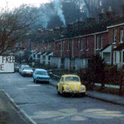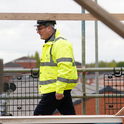The burnt remains of the Grenfell tower linger on the west London skyline as a sign of the UK’s housing crisis. The building, the fire, and events before and after, epitomise decades of profiteering, dysfunctionality—and disdain. In the days after the fire, the state appeared in chaotic bursts. Families and friends of the missing were left to walk the streets of the country’s richest borough in an attempt to find news of relatives. Four days later, Nisha Parti, a volunteer, said there was no consistent council presence; a new representative would come every day.
There are, the experts say, a well-known set of principles that guide the response to a major emergency. On each count, local and national government failed. Unlike the 7/7 attacks, there was no rapid response; despite stockpiling £274m in reserves, Kensington and Chelsea council offered paltry support to survivors. There was no state-run help centre, no transparency and scarcely any responsibility taken. It’s hard to believe the response would have been so haphazard had the residents been wealthy.
For decades, homes have been financialised. Margaret Thatcher’s government painted social housing as out of place in a property-owning democracy; at times, New Labour seemed to think the same way. They sold off council houses, and didn’t replace them. Transfer of control to housing associations furthered the sense that there was something “wrong” with publicly-provided housing. The commodification of homes pushed up prices and rents everywhere.
"Time and again, residents raised safety concerns only to be ignored, some reportedly threatened"And, in a borough like Kensington, the upshot was luxury houses constructed, almost purely, for global investors to multiply their millions. Almost 200,000 unaffordable properties currently lie empty across England, even while so many others are forced—either by sky-high private rents or the failure to refurbish social housing properly—to live in dank, unsafe conditions. The weeks following the Grenfell fire highlighted the cruel absurdities. Theresa May found £5m for emergency supplies for the victims—in a borough in which the average terrace house goes for a touch over £4m, and the average semi- for a touch over £6m.
The state’s response mirrors the disregard the authorities had for the residents before the fire. Time and again, they raised safety concerns only to be ignored, some reportedly threatened. Even after the catastrophe, the council has shown no serious interest in any outside perspective. When Kensington councillors met to discuss the fire, the first instinct was to turf out the public—as well as the press—and the leader (who has since had to resign) preferred to shut the meeting down than to open up the discussion.
The class politics of the austerity years have encouraged such disdain. Governments have, at times, vilified the poor (Cameron’s strivers vs skivers), which can easily turn living in social housing into a badge of shame.
Four years ago George Osborne stoked this prejudice in the case of Mick Philpott—a man who inadvertently killed six of his own children by conspiring to light a house fire from which he had hoped to rescue them, a stunt designed to advantage him in a custody battle. Benefits had no bearing on the motivation, but Philpott happened to claim them. Osborne made an incoherent connection between this fact and the fire: “there is a question for government and for society about the welfare state and the taxpayers who pay for the welfare state, subsidising lifestyles like that,” he said.
Such rhetoric reflects the divisions on show when Grenfell residents came to be rehoused. When it was announced some survivors would be moved into a private block in pricey Kensington, one existent tenant said this would “degrade things.” It was, quite simply, an affront to wealthy residents that the people who might be in lower-paid jobs would now be living next door. This is a microcosm of standard thinking on housing: poor residents are castigated as a burden.
The housing crisis is about race and migration status, as well as class. The residents who populated Grenfell were overwhelmingly people of colour and migrants. Indeed, Shelter has found that BME households are twice as likely as whites to live in conditions deemed unfit for human habitation. Migrants are three times more likely than others to live in crowded private rental properties and “hot bedding,” where the same bed is shared in shifts, is common.
The blackened ruin of Grenfell is a towering testimony to the scale of the housing crisis. But there seems to be no desire to change course. The stampede to build unaffordable flats continues, and many survivors have waited weeks to be rehoused; and there are scant hopes for the inquiry that is slowly cranking into motion. The real solutions seem as remote as ever: build social housing; curb the financialisation of the property market; and, above all, treat marginalised people like human beings.












